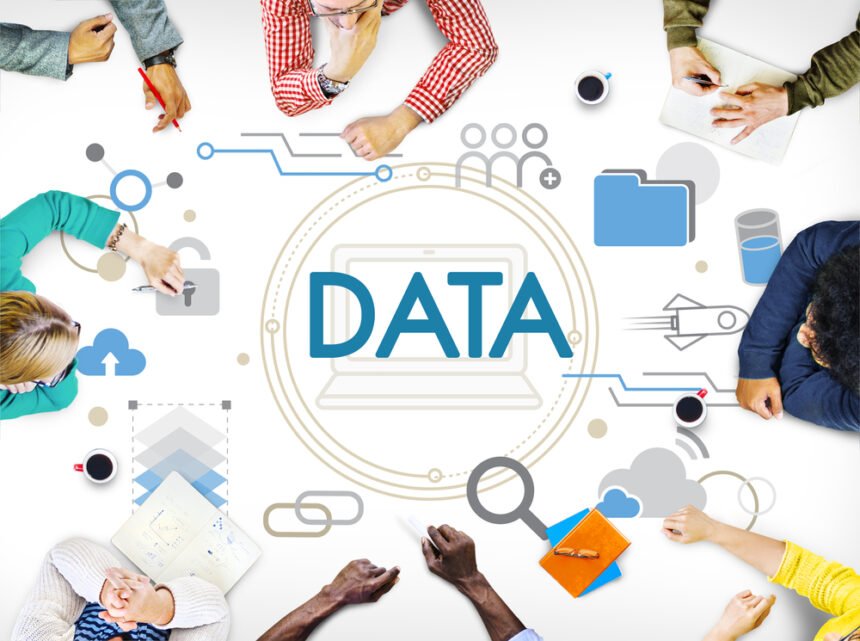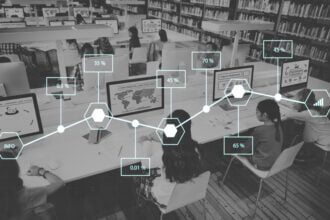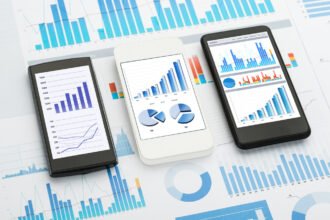Technologies change the way we teach and learn. Big data is one of the most important technological advances that is shaping the education sector in the 21st Century.
New big data tools help to reimagine and improve our strategies. They are especially relevant in the context of distance learning. Technologies empower a student-centered approach to education. They add new ways in which students and teachers interact. Modern developments maintain an optimal learning environment.
New data-driven technologies offer diverse benefits, making education more personalized. Here are the top trends that will support education in 2021.
Artificial Intelligence (AI)
AI is gaining popularity in the education sector. According to projections, its use will grow by 47.5 percent in 2021. AI improves automatized grading and serves as a teaching assistance technology. It allows educators to spend less time on routine tasks. They can use chatbots to answer monotonous questions about deadlines and assignment instructions. It saves them a lot of time. As a result, teachers can concentrate on providing helpful, personalized feedback.
AI also supports bot training for learners. Chatbots can send them information in small chunks via messengers or specialized apps. It makes the presentation of material more interactive. Besides, there are bots that help language learners to practice communication skills. Some of the chatbots with useful functionality are Duolingo, iTalk2Learn, Botsify, and SnatchBot.
Gamification
Games make education more exciting and engaging for students. They allow building knowledge and skills through a familiar activity. The playful nature of learning is a huge advantage. It is a source of creativity and positive emotions in classroom activities. Games promote curiosity and fantasy, bringing educational value at the same time.
Gamification incorporates game design into education. It is helpful in computer-assisted language learning and computer-based instructions. The concept itself is universal. Gamification can help kids in a kindergarten classroom as well as adult students in post-secondary institutions. Naturally, content and gaming elements will vary. Yet, the principles remain the same. Gaming elements such as levels, points, progress bars, milestones, and badges serve to create wholesome digital learning systems. They produce an inclusive and competitive environment where students fulfill their learning needs.
Big Data Analytics
Students no longer benefit from standardized practices. There is a need to make the learning process more cut out for the needs of each particular student. It involves designing customized courses and reading materials. Today this process can be driven by big data. It allows educators to assess students’ academic performance, learning objectives, and interests. Thus, teachers can consider the central indicators of student engagement in the design of their courses.
Some students struggle to reach the academic standards of their institutions. They need additional attention and support most. Luckily, there are solutions for them as well. Essay writing by DoMyEssay can help learners improve their grades. Another option is to refer to the support system of the school. Educators will use evidence-based analytics to help such low-performing students with individual learning plans.
One more reason to incorporate the use of big data in education is to inform decision making. Educational institutions deal with large sets of data. Yet, it often remains untapped unless analyzed with the help of computational methods. Therefore, big data is crucial for making quick and effective decisions to maintain development.
Extended Reality (XR)
The education sector has made large investments in XR. This technology includes augmented reality (AR) and virtual reality (VR). They allow students to get an immersive learning experience. AR combines the virtual and material worlds, transforming real-life images with virtual elements. VR goes further and generates virtual settings that can take a student to a different time and space.
Both technologies serve various educational purposes. Students can practice in virtual labs and go on field trips. They do not even need to leave the classroom to get new experiences. XR allows students to interact with the material they learn. This improves the understanding of complex concepts and knowledge retention. With XR, the hands-on experience becomes more affordable and thus accessible. Learners can perform simple operations with the help of a smartphone or tablet. It means that students can use XR even from home during distance learning.
Cybersecurity
All the technologies mentioned above can bring benefits only if they are applied according to high cybersecurity standards. Without it, data-driven systems are vulnerable to identity theft, malware, and viruses. According to statistics, schools are the second most frequent target for ransomware attacks. Educational entities need security tools to guarantee a safe environment. Their students and staff should be sure that their personal data is protected.
Today, cybersecurity is among the top trends. Leaders in the education sector focus their efforts to enhance it. They promote staff and student training and introduce multi-factor authentication tools. When users treat technologies responsibly, they are less likely to face any data breaches and cause worry for institutions or individuals.
Conclusion
Technology-empowered education is key to accessible and convenient learning. AI, XR, gamification, cybersecurity, and data-driven systems are taking over education. They promote creativity and increase engagement through advanced tools and materials. Innovations bring along valuable insights that enhance learning and teaching during the whole educational continuum.










